Oman's Sultan Visits Iran To Strengthen Ties, Discuss Region

Oman’s sultan arrived in Iran on Sunday for a two-day visit and met with President Ebrahim Raisi in a visit expected to focus on regional diplomatic and security issues.

Oman’s sultan arrived in Iran on Sunday for a two-day visit and met with President Ebrahim Raisi in a visit expected to focus on regional diplomatic and security issues.
The visit by Sultan Haitham bin Tariq al-Said came two days after Muscat mediated a prisoner swap between Iran and Belgium.
Oman has traditionally been an interlocutor between the West with the IslamicRepublic and has mediated the release of several foreign citizens and dual nationals held hostage by Iran.
On Friday, Oman helped secure the release of a Belgian aid worker, who was arrested in 2022 and sentenced to 40 years in prison and 74 lashes on trumped-up charges including spying, in exchange for Iranian diplomat and intelligence agent Assadollah Assadi sentenced to 20 years in prison for a failed bomb plot in France against exiled opposition group Mujahideen-e Khalq (MEK).
Dozens of foreigners and dual nationals still remain in jail in Iran, most facing espionage and security-related accusations. Rights groups have criticized the arrests as a hostage-taking tactic by Tehran to win concessions from the West.
Iran and Oman on Sunday signed four documents to improve cooperation in various sectors in the fields of e economic, energy and investment as well as free economic zones.
The documents were inked by Iranian ministers of petroleum, economic affairs and finance as well as the secretary-general of the Supreme Council of Free Trade-Industrial and Special Economic Zones and Omani minister of energy, finance and trade.
The visit comes as Iran also faces renewed criticism of its human rights record and its supply of drones for the Russian invasion of Ukraine.
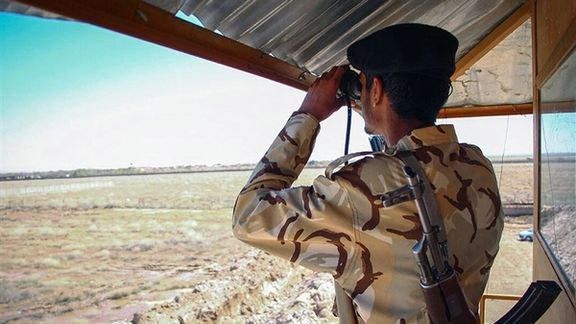
Amid escalating tensions with Afghanistan, the Iranian regime has sent senior military commanders to restive areas as the Taliban took control of aborder post.
Clashes at the border on Saturday over water rights claimed the lives of at least two Iranians and one Taliban soldier. According to a report by Iranian reformist daily newspaper Ham-Mihan, about 50 Iranians have been killed in border regions since 2020.
While Taliban forces gave thanks to God after allegedly seizing a guard post inside Iranian territory on Saturday, two senior Iranian military officials have been visiting the region.
Despite Iran saying the clashes are over and the situation is in control, Taliban sources have released videos of capturing an outpost inside Iran.
Qasem Rezaei, deputy commander of Iran's Law Enforcement Forces and Kiumars Heydari, the Commander of the Iranian Army's Ground Forces, travelled to Sistan-Baluchestan province bordering Afghanistan to probe the situation. Both officers are sanctioned by the United States.
Sistan-Baluchistan, with a hot and arid climate, is populated by less than 3 million people, most of whom are ethnic Baluch who are Sunni Muslims, in contrast with the Shiite majority in Iran. Poverty and under-development plague the region.
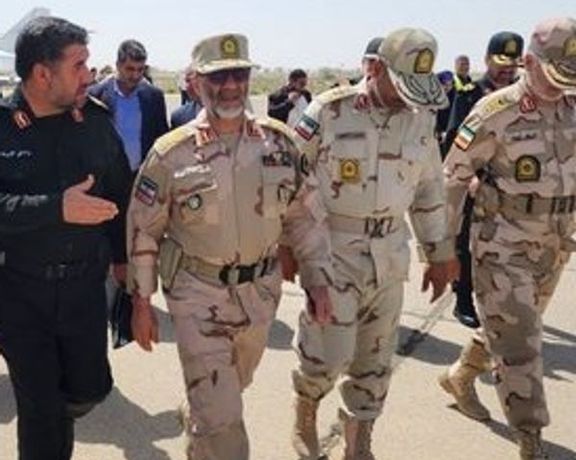
Heydari said, “The common borders with Afghanistan are fully under the control of the army's ground forces... and security is fully established,” adding that “it has been pointed out many times that our presence at the border does not mean that there is any danger threatening us, but … security is maintained at the borders.”
“There may sometimes be a difference between the two border guards, which is not an important issue, and the situation is completely under control,” he added.
“Our comrades in border guards and ground forces are completely dominant in the region, and as long as Afghanistan’s forces respect international regulations, we will show mutual respect and maintain the policy of good neighborliness,” but if the other side does not want to comply with the regulations, Iranian forces will encounter them, he said.
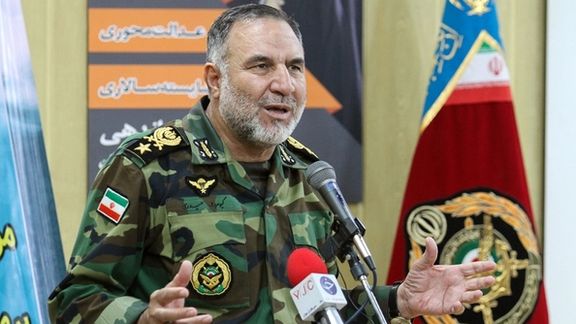
Mohammad Baset Dorrazehi, the former parliament member representing the province, said, “I said many times that local soldiers should be used for this region. Non-natives are not familiar with the environment and even in terms of climate, they cannot tolerate these conditions."
At least three sources from the Taliban confirmed to Afghanistan International that during the conflict, the fighters of this group had entered the territory of Iran. However, the Taliban did not confirm or deny the report of the capture of the Iranian outpost.
In response to Afghanistan International's question about reports on the clashes, a Taliban source said: "The Taliban do not joke in war."
The Taliban's Interior Ministry spokesman says the group does not seek to engage in a war with Afghanistan's neighbors.
Amid escalating tensions, Iran’s Border Guard and the Taliban exchanged heavy gunfire on Saturday on the Islamic Republic's border with Afghanistan. Iran says its forces inflicted “heavy casualties and serious damage”.
Disputes between Tehran and Kabul have risen over the Taliban’s obstruction of Iran's access to Helmand River water in violation of a 1973 treaty.
Iran has accused Afghanistan's Taliban of violating a 1973 treaty by restricting the flow of water from the Helmand River to Iran's parched eastern regions, an accusation denied by the Taliban.
"Today, in Nimroz province, Iranian border forces fired toward Afghanistan, which was met with a counter-reaction," spokesman for the Taliban-run interior ministry, Abdul Nafi Takor, said in a statement.
"The situation is under control now. The Islamic Emirate does not want to fight with its neighbors," the spokesman said, without identifying the victims.
A Taliban defense ministry spokesman said the Taliban "considers dialogue and negotiation to be a reasonable way for any problem. Making excuses for war and negative actions is not in the interest of any of the parties.”
Earlier in May, Iranian President Ebrahim Raisi warned the Taliban over disregarding Iran's water rights under the 1973 treaty. The Taliban rejected Raisi's perceived threat, with a former Taliban official mocking Raisi in a video that went viral.
Last week, Iranian media reported that five Iranian border guards were killed following a "terrorist" attack by several people who were trying to enter Iran from the Pakistan border.
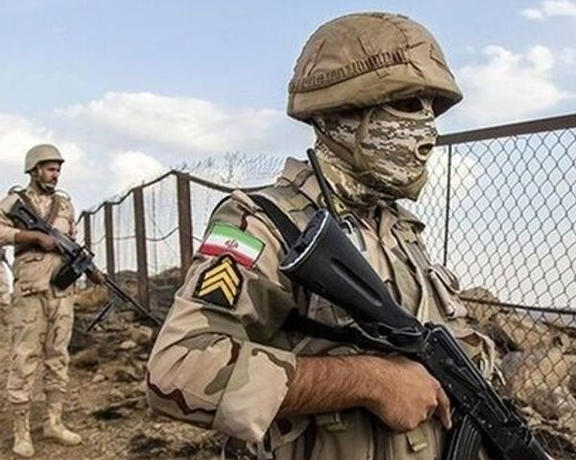
At least 50 Iranian servicemen have been killed on Iran’s borders in the past three years, Ham-Mihan newspaper in Tehran reported Sunday.
The information was published one day after two Iranian soldiers died during clashes with Afghanistan’s Taliban forces on the eastern borders of the country.
The newspaper quoted a former lawmaker representing the restive eastern Sistan-Baluchistan province as saying that he had urged the armed forces and law enforcement during his tenure in parliament to station servicemen from local regions on the border, who know the culture and the terrain.
Soldiers from other areas of the vast country and cities are totally unfamiliar with the dangerous regions on Pakistan and Afghanistan borders, where a lot of drug smuggling takes place.
The lawmaker added that on occasions Iranian soldiers “got so disoriented that by mistake they entered Pakistani territory and into traps set for them.”
Sistan-Baluchistan, with a hot and arid climate, is populated by less than 3 million people, most of whom are ethnic Baluch who are Sunni Muslims, in contrast with the Shiite majority in Iran. Poverty and under-development plague the region.
The Sunni Baluch rallied against the government in September 2022, when nationwide protests engulfed Iran after the death of Mahsa Amini in hijab police custody. Security forces killed nearly 90 civilians in Zahedan, the center of the province on September 30 and weekly protests continue for equality and freedoms.

Amid Western objections over Iran’s arms supplies to Russia, Tehran’s defense minister claims the regime “has no restriction” on exporting and importing weapons.
Brigadier General Mohammad-Reza Ashtiani made the remarks in an interview with Revolutionary Guards-affiliated Tasnim news agency on Sunday, not explaining how this is translated into reality under the US and EU arms embargoes on the country.
“We have no restriction on supplying equipment to [other] countries. We are in contact with all states and keep this contact with our might,” he said and asserted that there is no ban on Iran for buying defense equipment.
However, due to concerns over Iran's nuclear program, in addition to earlier US measures, the EU imposed a full arms embargo on Iran in 2007, which remains in place even after the UN Security Council-imposed restrictions on arms exports to Iran were lifted in October 2020.
The EU sanctions included a prohibition on the direct or indirect supply, sale or transfer of items, materials, equipment, goods and technology, ammunition, military vehicles, paramilitary equipment, and spare parts of all types. Its scope differs from the UN arms embargo in that it includes all types of arms and not only those defined by the UN Register of Conventional Arms.
As part of an international agreement on the Iranian nuclear program, the Joint Comprehensive Plan of Action (JCPOA) of 14 July 2015, the EU agreed to lift its missile technology and arms transfers embargo on Iran eight years after the International Atomic Energy Agency (IAEA) would provide a report to the UNSC to conform that Iran has taken the actions related to its nuclear program specified in the JCPOA.

Therefore, the EU embargoes are scheduled to remain in place until 18 October 2023, and will also be lifted if and when the IAEA reaches the so-called 'Broader Conclusion' in which it determines that all nuclear material in Iran remains in peaceful activities. Such a confirmation has not happened yet, and its prospects seem very dim, considering the fact that Iran is enriching uranium above the levels specified in the JCPOA and has been advancing its ballistic arsenal disregarding its commitments.
On Thursday, Iran unveiled its newest long-range ballistic missile, prompting France and the US to condemn the move as a violation of the United Nations Security Council resolution 2231 of 2015 that endorsed the Iran nuclear deal.
However, it seems that the Islamic Republic feels confident about counting on its allies for arms exports and imports, such as Russia and Venezuela.
Elsewhere in the Sunday interview, Defense Minister Ashtiani said, “The Islamic Republic will help any country that remains committed to international security and peace,” without elaborating how Russia is committed to international peace given its war in Ukraine.
Referring to reports about Iran’s plans to buy Sukhoi Su-35 Russian-made single-seat, twin-engine fighter jets, he said that “if we feel the need…we try to get technological facilities or equipment from any country that possesses them.”
Despite reports indicating a possible shipment of Sukhoi Su-35s in the near future, Ashtiani said “The discussions about the Su-35 fighters are mostly speculations,” adding that some deals may yield a result years after their signing.
Last September, Commander of the Iranian Army’s Air Force Brigadier General Hamid Vahedi said Iran has no plans to buy Sukhoi 30, but it has rather put on its agenda the purchase of Su-35 fighters. In January, Iranian lawmaker Shahriar Heidari said that the Su-35 jets were to arrive in the current Iranian calendar year, which began on March 21.
Ashtiani also referred to a 20-year partnership agreement signed between the Islamic Republic and Venezuela last June to expand ties in various sectors, including military. He said that the defense ministry is coordinating in different fields, among them security and defense.
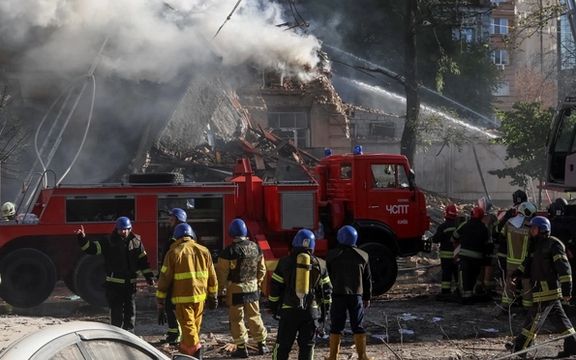
The Ukrainian government submitted a resolution to parliament on May 27 to impose 50-year-long sanctions on Iran, ostensibly for its supply of weapons to Russia.
Ukrainian Pravda website reported on Sunday that the draft resolution by the National Security and Defense Council of Ukraine "On the application of sectoral special economic and other restrictive measures (sanctions) against the Islamic Republic of Iran,” was submitted to the legislature.
The resolution stipulates a complete trade ban, suspension of transit resources, flights and transportation and prevention of capital outflow by Iranian citizens.
Iran has supplied hundreds of Kamikaze drones to Russia that have been used to target mainly Ukrainian infrastructure and civilians since September 2022. Tehran has denied that it has sent any drones to Moscow since the invasion of Ukraine began in February 2022, but Kyiv has presented overwhelming material evidence showing Russia has used Iranian-made Shahed drones.
Ukraine’s air defenses have learned to shoot down the great majority of the drones, but some slip through anti-aircraft fire and hit civilian targets. A large attack by Iranian drones shook the capital Kyiv on Sunday.
The proposed sanctions package requires the Cabinet of Ministers, the Security Service, the Foreign Intelligence Service, the National Bank and other state authorities to implement and monitor the sanctions.
The document also proposes to prohibit any investment in Iran, transfer of technology and intellectual property rights by residents of Ukraine.
Kyiv also has an ongoing dispute with Tehran over the downing of a civilian airliner belonging to one of its airlines in January 2020 over Tehran by two IRGC missiles which resulted in the death of 176 people onboard. Iran has prevented a independent investigation and a clear report on the incident.
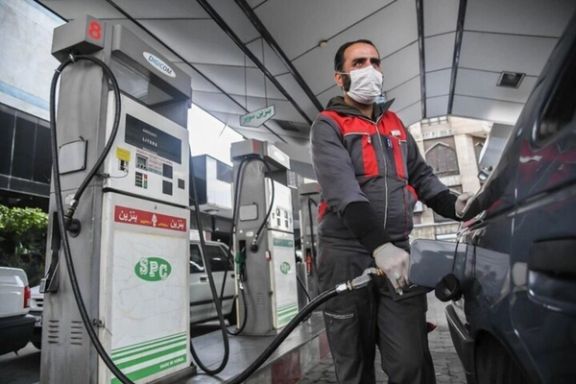
An Iranian official said Sunday that in addition to a limit on cheap gasoline for citizens, more expensive fuel will also be rationed, and limited to 150 liters per month.
Gasoline and other fuels are heavily subsidized in Iran, which coupled with refining limitations, has led to shortages this year according to the government.
In 2019, the government raised gasoline prices to 15,000 rials per liter, or less than 3 US cents in today’s exchange rates. At this price citizens were allowed to buy 60 liters per month, or 15.8 US gallons. But it sold unlimited gasoline at double the minimum price.
The new regulation caps the more expensive gasoline at 150 liters per individual, per month – or 40 gallons. The 60-liter allowance at the cheaper price remains in effect. Overall, gasoline, diesel and natural gas prices in Iran are among the lowest in the world.
Iran’s heavy fuel and electricity subsidies cost the country at least $50 billion a year, while the government struggles to secure foreign currencies amid US economic sanctions.
The government is entertaining the idea of raising fuel prices, but last time when it increased prices in 2019, fierce nationwide protests broke out. Government forces killed at least 1,500 people in one week and badly damaged the regime’s legitimacy.
Five years of economic crisis since the imposition of US sanctions have pushed annual inflation to near 70 percent and the national currency rial has lost its value 12-fold.